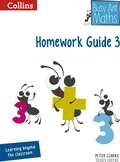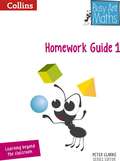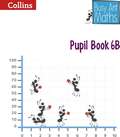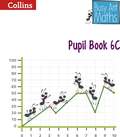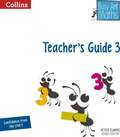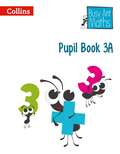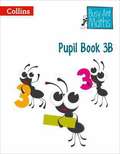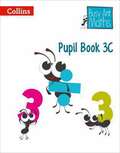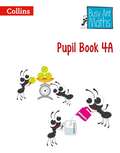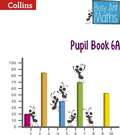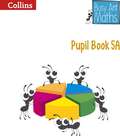- Table View
- List View
Butterfly lifecycle 5 (adult fills and dries wings) (UEB Contracted)
This image shows the butterfly viewed from the side with its head on the right and its tail on the left. There is a locator dot shown, which will be at the top left of the page when the image is the right way up. On the right one of its two large eyes is showing with one of its two antennae above it. To the left of the head is the thorax with two of its four wings sticking up. To the right is the fore wing with two patches of orange in the centre and up from them, two white spots. The hind wing is to the left, it has a silver spot near the thorax and a grey band on the edge to the left. The wings are still soft bags which will flatten as the veins fill and stretch them flat and hard. Left from this is the segmented abdomen. Three of its six multi-jointed legs can be found, upon which it stands.
Butterfly lifecycle 5 (adult fills and dries wings) (Large Print)
This image shows the butterfly viewed from the side with its head on the right and its tail on the left. There is a locator dot shown, which will be at the top left of the page when the image is the right way up. On the right one of its two large eyes is showing with one of its two antennae above it. To the left of the head is the thorax with two of its four wings sticking up. To the right is the fore wing with two patches of orange in the centre and up from them, two white spots. The hind wing is to the left, it has a silver spot near the thorax and a grey band on the edge to the left. The wings are still soft bags which will flatten as the veins fill and stretch them flat and hard. Left from this is the segmented abdomen. Three of its six multi-jointed legs can be found, upon which it stands.
Butterfly lifecycle 4 (adult emerges from pupa) (UEB Uncontracted)
This image shows an opened pupa hanging on the left and in the centre of the page is the recently emerged adult hanging onto the right side of the pupa. There is a locator dot shown, which will be at the top left of the page when the image is the right way up. Its head is in the top centre and the tail in the bottom centre of the page. They are surrounded by an image border. The empty casing of the pupa hangs head down with the bottom half opened up. At the top centre of the page is the end of one of the adult's two antennae, it is still soft from being in the pupa and has not yet straightened and stiffened. To the left of the base of the antenna one of its two large eyes is showing on its head. Down from the head is the thorax with two of its four wrinkled wings sticking out to the right. The upper, larger fore wing has an orange band in the middle and two white spots in the top centre. The smaller hind wing is down from this and has an orange edge on the right. Three of its six multi-jointed legs are to the left of the abdomen, which it uses to hold onto the pupa. Down from this is the segmented abdomen.
Butterfly lifecycle 4 (adult emerges from pupa) (UEB Contracted)
This image shows an opened pupa hanging on the left and in the centre of the page is the recently emerged adult hanging onto the right side of the pupa. There is a locator dot shown, which will be at the top left of the page when the image is the right way up. Its head is in the top centre and the tail in the bottom centre of the page. They are surrounded by an image border. The empty casing of the pupa hangs head down with the bottom half opened up. At the top centre of the page is the end of one of the adult's two antennae, it is still soft from being in the pupa and has not yet straightened and stiffened. To the left of the base of the antenna one of its two large eyes is showing on its head. Down from the head is the thorax with two of its four wrinkled wings sticking out to the right. The upper, larger fore wing has an orange band in the middle and two white spots in the top centre. The smaller hind wing is down from this and has an orange edge on the right. Three of its six multi-jointed legs are to the left of the abdomen, which it uses to hold onto the pupa. Down from this is the segmented abdomen.
Butterfly lifecycle 4 (adult emerges from pupa) (Large Print)
This image shows an opened pupa hanging on the left and in the centre of the page is the recently emerged adult hanging onto the right side of the pupa. There is a locator dot shown, which will be at the top left of the page when the image is the right way up. Its head is in the top centre and the tail in the bottom centre of the page. They are surrounded by an image border. The empty casing of the pupa hangs head down with the bottom half opened up. At the top centre of the page is the end of one of the adult's two antennae, it is still soft from being in the pupa and has not yet straightened and stiffened. To the left of the base of the antenna one of its two large eyes is showing on its head. Down from the head is the thorax with two of its four wrinkled wings sticking out to the right. The upper, larger fore wing has an orange band in the middle and two white spots in the top centre. The smaller hind wing is down from this and has an orange edge on the right. Three of its six multi-jointed legs are to the left of the abdomen, which it uses to hold onto the pupa. Down from this is the segmented abdomen.
Butterfly lifecycle 3 (pupa) (UEB Uncontracted)
The pupa has its head to the right of the page and the tail end to the left. At the bottom of the page is a scale. There is a locator dot shown, which will be at the top left of the page when the image is the right way up. In the right centre of the image the circular shape of the covered eye can be found. Down from this is a covered antenna which goes left to the centre of the pupa. The large triangular area on the right of the pupa is where the wing is developing. The left half of the pupa is its developing abdomen with a small spiracle in the centre of each segment allowing it to breathe. Towards the top of each segment is a small decorative golden stud.
Butterfly lifecycle 3 (pupa) (UEB Contracted)
The pupa has its head to the right of the page and the tail end to the left. At the bottom of the page is a scale. There is a locator dot shown, which will be at the top left of the page when the image is the right way up. In the right centre of the image the circular shape of the covered eye can be found. Down from this is a covered antenna which goes left to the centre of the pupa. The large triangular area on the right of the pupa is where the wing is developing. The left half of the pupa is its developing abdomen with a small spiracle in the centre of each segment allowing it to breathe. Towards the top of each segment is a small decorative golden stud.
Butterfly lifecycle 3 (pupa) (Large Print)
The pupa has its head to the right of the page and the tail end to the left. At the bottom of the page is a scale. There is a locator dot shown, which will be at the top left of the page when the image is the right way up. In the right centre of the image the circular shape of the covered eye can be found. Down from this is a covered antenna which goes left to the centre of the pupa. The large triangular area on the right of the pupa is where the wing is developing. The left half of the pupa is its developing abdomen with a small spiracle in the centre of each segment allowing it to breathe. Towards the top of each segment is a small decorative golden stud.
Butterfly lifecycle 2 (caterpillar) (UEB Uncontracted)
The mature dark grey green caterpillar is shown from the side with its head to the right and a scale at the bottom of the page. There is a locator dot shown, which will be at the top left of the page when the image is the right way up. Its head has one of its two large eyes showing and one of its two antennae above it. Below the eye is one of its mouth parts. It is a hairy caterpillar with spiky hairs on its back and sides. Three of its six thoracic legs are to the right and four of its eight prolegs are to the left. Just above the legs running the length of the caterpillar is a wavy yellow line. The caterpillar ends on the left with its anal clasper.
Butterfly lifecycle 2 (caterpillar) (UEB Contracted)
The mature dark grey green caterpillar is shown from the side with its head to the right and a scale at the bottom of the page. There is a locator dot shown, which will be at the top left of the page when the image is the right way up. Its head has one of its two large eyes showing and one of its two antennae above it. Below the eye is one of its mouth parts. It is a hairy caterpillar with spiky hairs on its back and sides. Three of its six thoracic legs are to the right and four of its eight prolegs are to the left. Just above the legs running the length of the caterpillar is a wavy yellow line. The caterpillar ends on the left with its anal clasper.
Butterfly lifecycle 2 (caterpillar) (Large Print)
The mature dark grey green caterpillar is shown from the side with its head to the right and a scale at the bottom of the page. There is a locator dot shown, which will be at the top left of the page when the image is the right way up. Its head has one of its two large eyes showing and one of its two antennae above it. Below the eye is one of its mouth parts. It is a hairy caterpillar with spiky hairs on its back and sides. Three of its six thoracic legs are to the right and four of its eight prolegs are to the left. Just above the legs running the length of the caterpillar is a wavy yellow line. The caterpillar ends on the left with its anal clasper.
Butterfly lifecycle 1 (eggs and hatching) (UEB Uncontracted)
This image shows a scale, an egg, a hatched egg and a newly emerged caterpillar. There is a locator dot shown, which will be at the top left of the page when the image is the right way up. The scale is on the left of the page. To its right is the dark green egg with pale vertical grooves. To the right of this is another egg which is broken open at the top. On the right of the page is the small pale green caterpillar with its head on the right and its anal clasper to the left. Its head has one of its two large eyes showing and one of its two antennae above it. It has a hairy back. Three of its six thoracic legs are to the right and four of its eight stumpy prolegs are to the left.
Butterfly lifecycle 1 (eggs and hatching) (UEB Contracted)
This image shows a scale, an egg, a hatched egg and a newly emerged caterpillar. There is a locator dot shown, which will be at the top left of the page when the image is the right way up. The scale is on the left of the page. To its right is the dark green egg with pale vertical grooves. To the right of this is another egg which is broken open at the top. On the right of the page is the small pale green caterpillar with its head on the right and its anal clasper to the left. Its head has one of its two large eyes showing and one of its two antennae above it. It has a hairy back. Three of its six thoracic legs are to the right and four of its eight stumpy prolegs are to the left.
Butterfly lifecycle 1 (eggs and hatching) (Large Print)
This image shows a scale, an egg, a hatched egg and a newly emerged caterpillar. There is a locator dot shown, which will be at the top left of the page when the image is the right way up. The scale is on the left of the page. To its right is the dark green egg with pale vertical grooves. To the right of this is another egg which is broken open at the top. On the right of the page is the small pale green caterpillar with its head on the right and its anal clasper to the left. Its head has one of its two large eyes showing and one of its two antennae above it. It has a hairy back. Three of its six thoracic legs are to the right and four of its eight stumpy prolegs are to the left.
Busy Ant Maths: Homework Guide 3 (Busy Ant Maths)
by Jeanette Mumford Sandra Roberts and Elizabeth Jurgensen Illustrated by Steve Evans Eva Sassin Gwyneth Williamson and Louise Forshaw Series edited by Peter ClarkeThe Busy Ant Maths programme ensures conceptual understanding and mathematical fluency from the start inside and outside the classroom. Homework is linked to the lesson plans in order to consolidate classroom learning, and the guide contains shared activities so parents can support their child’s learning. The Busy Ant Maths programme ensures conceptual understanding and mathematical fluency from the start inside and outside the classroom. The Homework Guide contains differentiated challenges to ensure that homework is provided for children of all levels. Homework is linked to the lesson plans in order to consolidate classroom learning, and the guide contains shared activities so parents can support their child’s learning. Written by an expert author team with over 50 years’ combined classroom experience, Busy Ant Maths is a flexible, whole-school mathematics programme that ensures conceptual understanding and mathematical fluency from the start. Supporting the 2014 National Curriculum, the homework guide provides you with differentiated homework exercises to support every child’s mathematical development.
Busy Ant Maths: Homework Guide 1 (PDF)
by Rachel Axten-Higgs Nicola Morgan Jo PowerThe Busy Ant Maths programme ensures conceptual understanding and mathematical fluency from the start inside and outside the classroom.
Busy Ant Maths: Pupil Book 6B (PDF)
by Andrew Edmonson Elizabeth Jurgensen Jeanette Mumford Sandra Roberts Peter ClarkeThe Busy Ant Maths Pupil Book 6B contains three levels of differentiated challenge built-in to each lesson as well as extra consolidation and extension activities to ensure rapid progression for every child.
Busy Ant Maths: Pupil Book 6C (PDF)
by Andrew Edmonson Elizabeth Jurgensen Jeanette Mumford Sandra Roberts Peter ClarkeThe Busy Ant Maths Pupil Book 6C contains three levels of differentiated challenge built-in to each lesson as well as extra consolidation and extension activities to ensure rapid progression for every child.
Busy Ant Maths: Teacher's Guide 3 (PDF)
by Elizabeth Jurgensen Jeanette Mumford Sandra RobertsThe Busy Ant Maths programme ensures confidence from the start for teachers and pupils, embedding best practice across the school.
Busy Ant Maths: Pupil Book 3A (PDF)
by Elizabeth Jurgensen Jeanette Mumford Sandra Roberts Peter ClarkeThe Busy Ant Maths Pupil Book 3A contains three levels of differentiated challenge built-in to each lesson as well as extra consolidation and extension activities to ensure rapid progression for every child.
Busy Ant Maths: Pupil Book 3B (PDF)
by Elizabeth Jurgensen Jeanette Mumford Sandra Roberts Peter ClarkeThe Busy Ant Maths Pupil Book 3B contains three levels of differentiated challenge built-in to each lesson as well as extra consolidation and extension activities to ensure rapid progression for every child
Busy Ant Maths: Pupil Book 3C (PDF)
by Elizabeth Jurgensen Jeanette Mumford Sandra Roberts Peter ClarkeThe Busy Ant Maths Pupil Book 3C contains three levels of differentiated challenge built-in to each lesson as well as extra consolidation and extension activities to ensure rapid progression for every child
Busy Ant Maths: Pupil Book 4A (PDF)
by Elizabeth Jurgensen Jeanette Mumford Sandra Roberts Peter ClarkeThe Busy Ant Maths Pupil Book 4A contains three levels of differentiated challenge built-in to each lesson as well as extra consolidation and extension activities to ensure rapid progression for every child.
Busy Ant Maths: Pupil Book 6A (PDF)
by Elizabeth Jurgensen Jeanette Mumford Sandra Roberts Linda GlithroThe Busy Ant Maths Pupil Book 6A contains three levels of differentiated challenge built-in to each lesson as well as extra consolidation and extension activities to ensure rapid progression for every child.
Busy Ant Maths: Pupil Book 5A (PDF)
by Elizabeth Jurgensen Jeanette Mumford Sandra Roberts Jo O'Keefe Power Peter Clarke'Busy Ant Maths' is a flexible whole school programme for primary maths that ensures conceptual understanding and mathematical fluency from the start.

